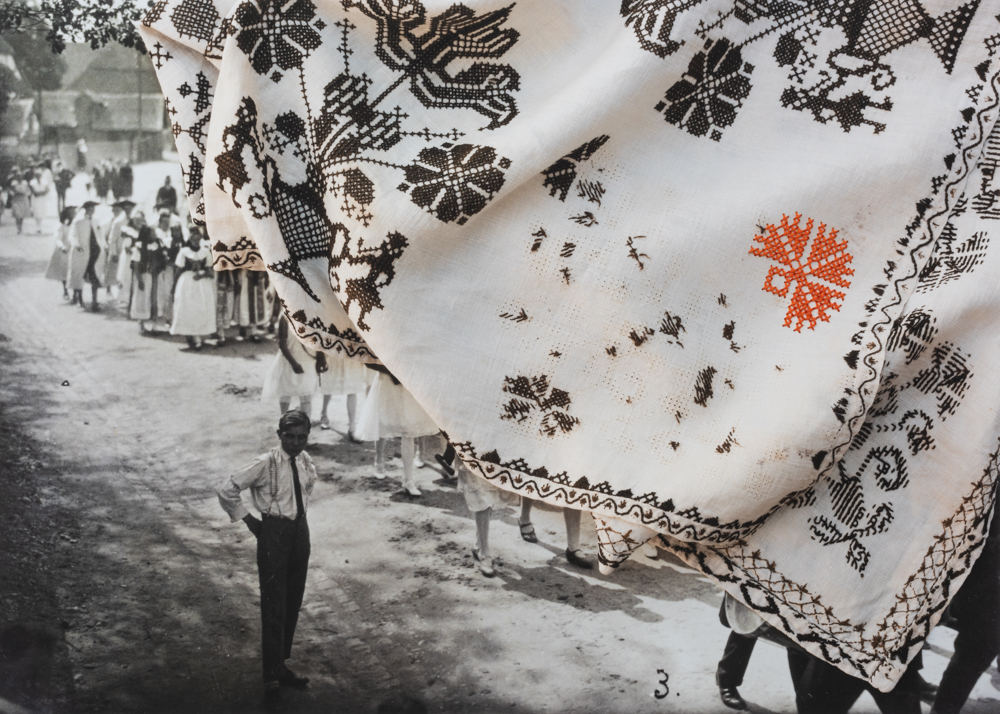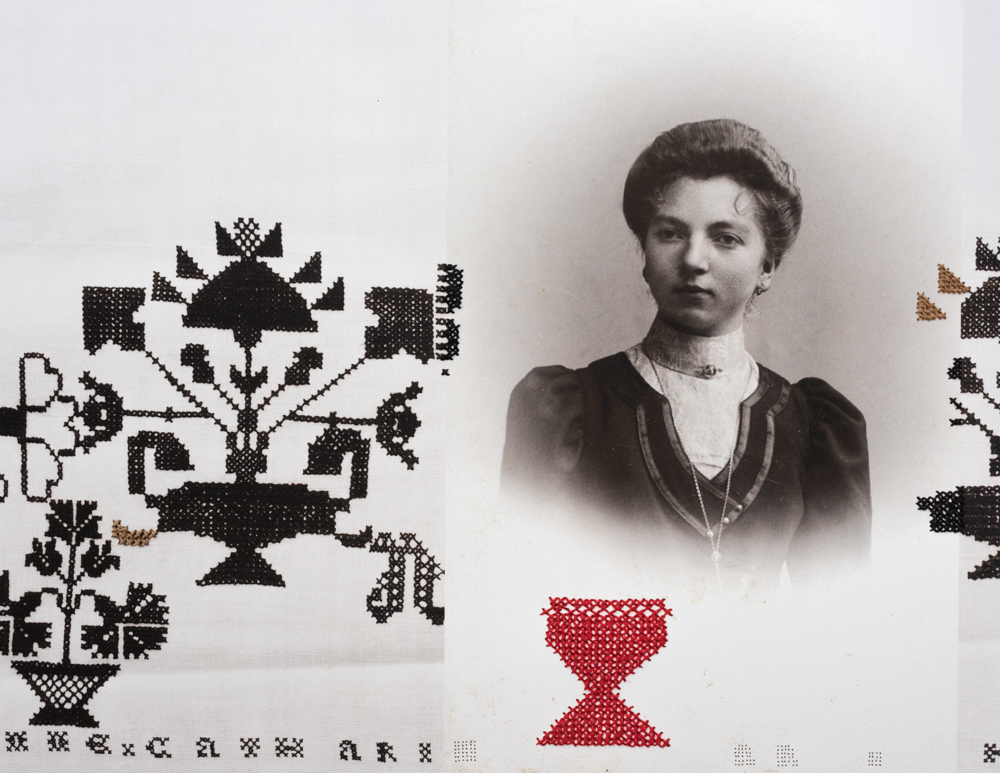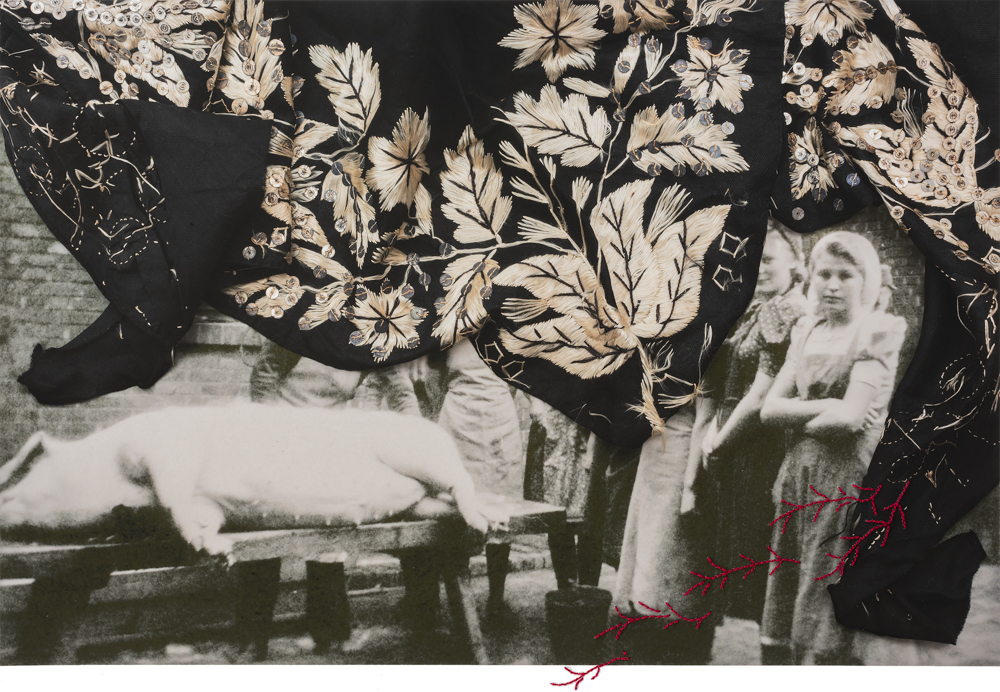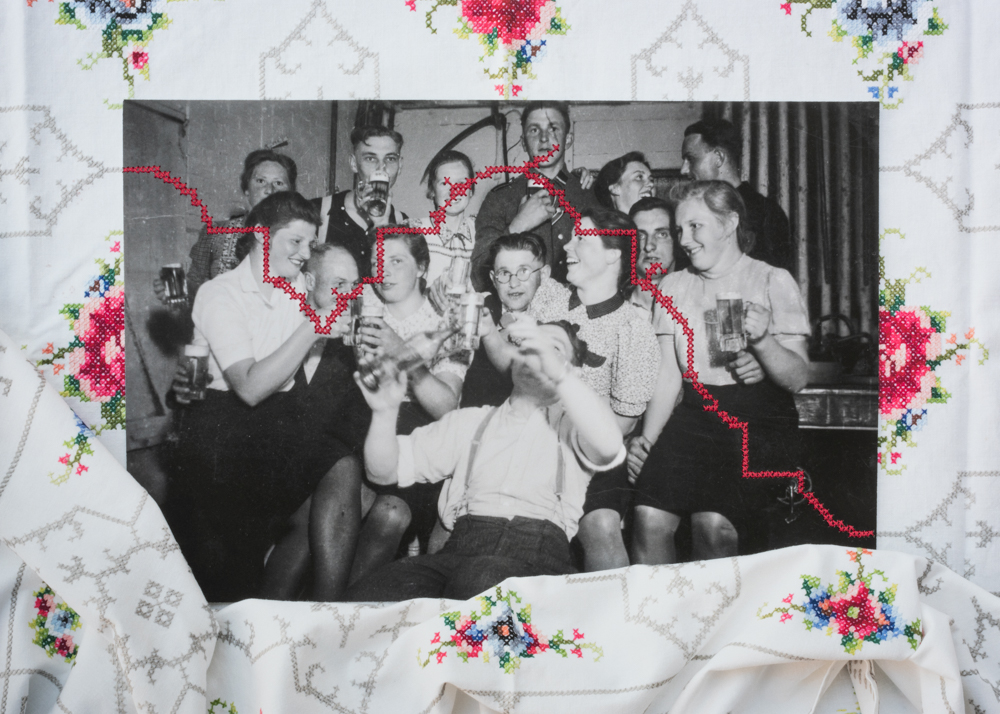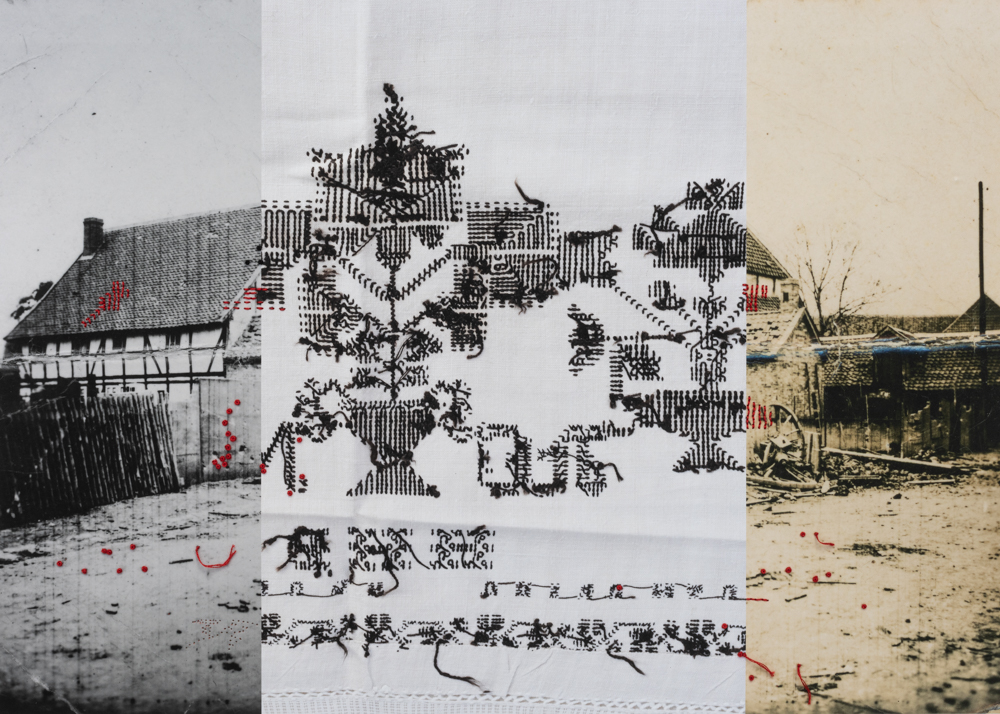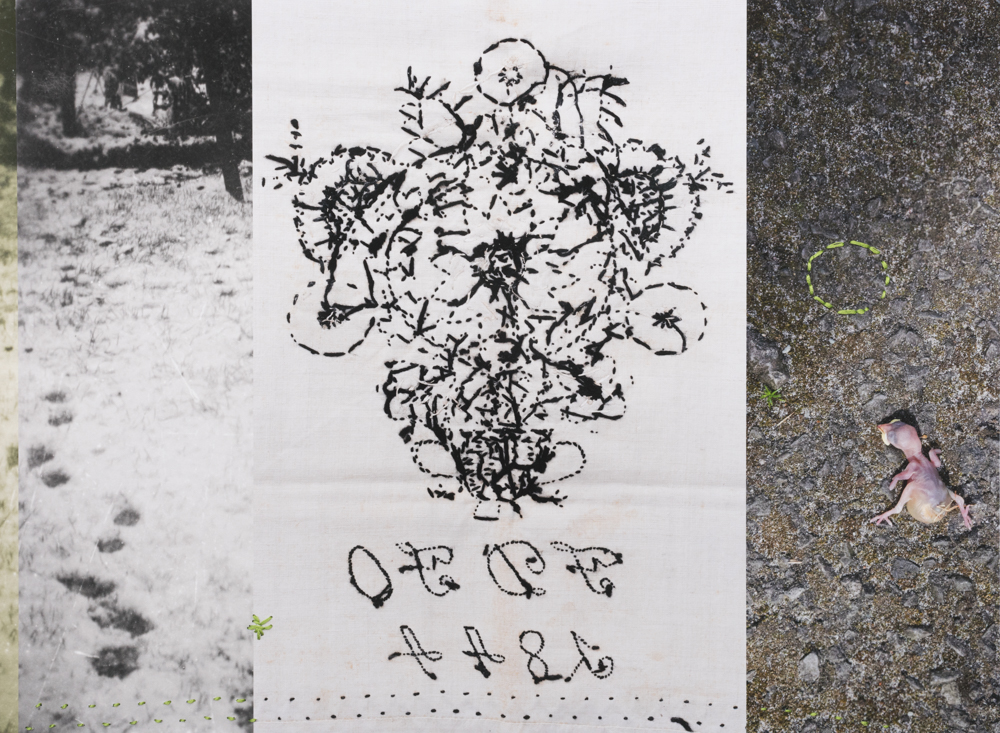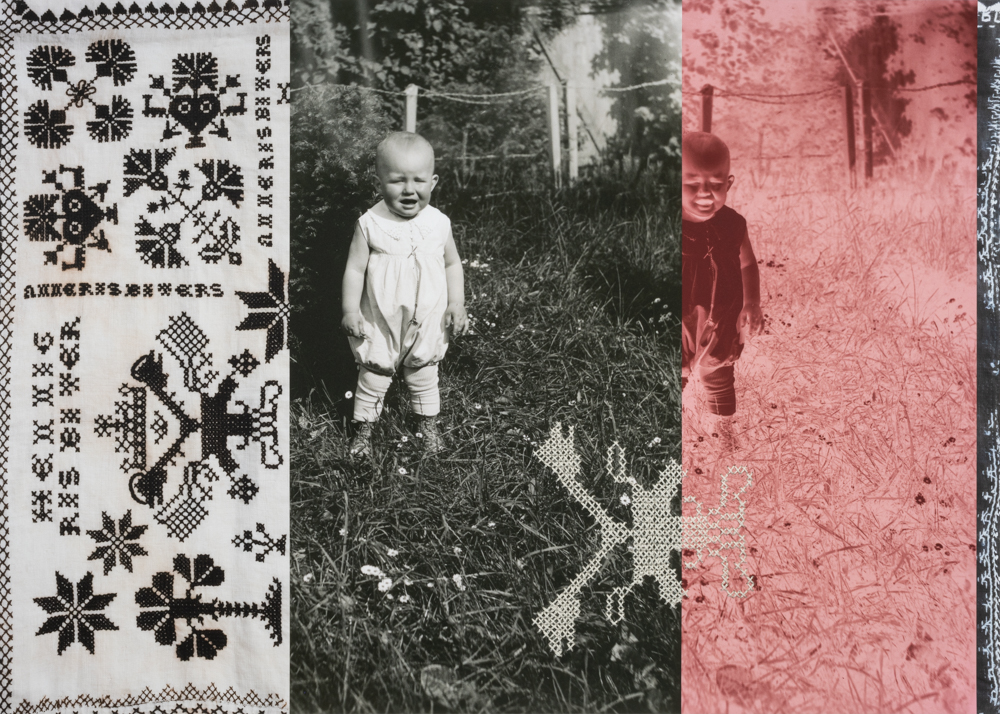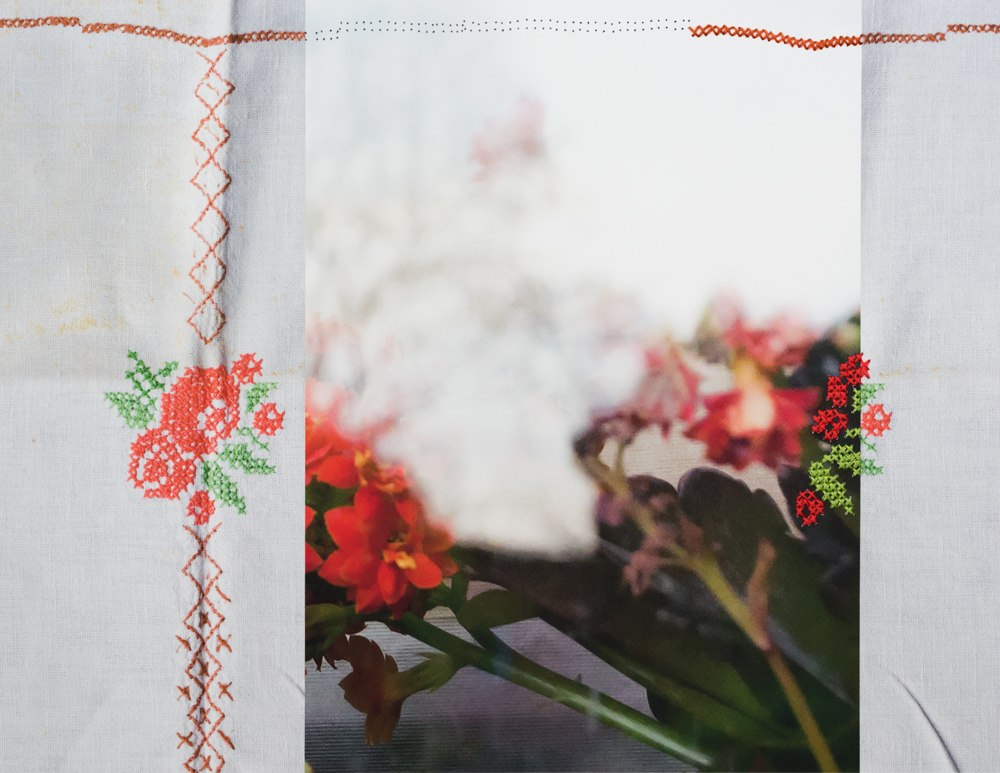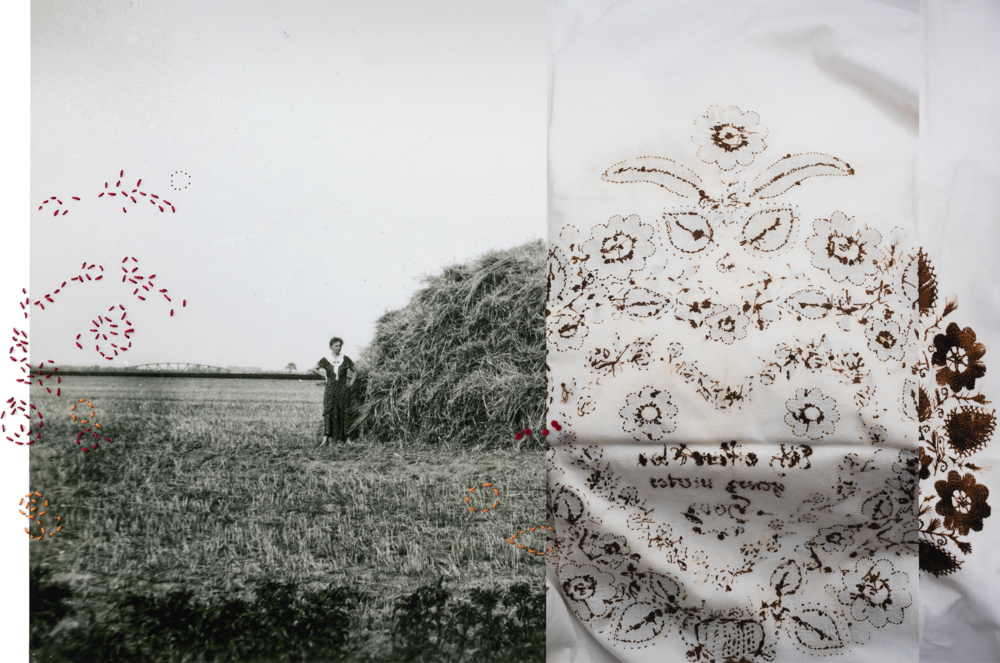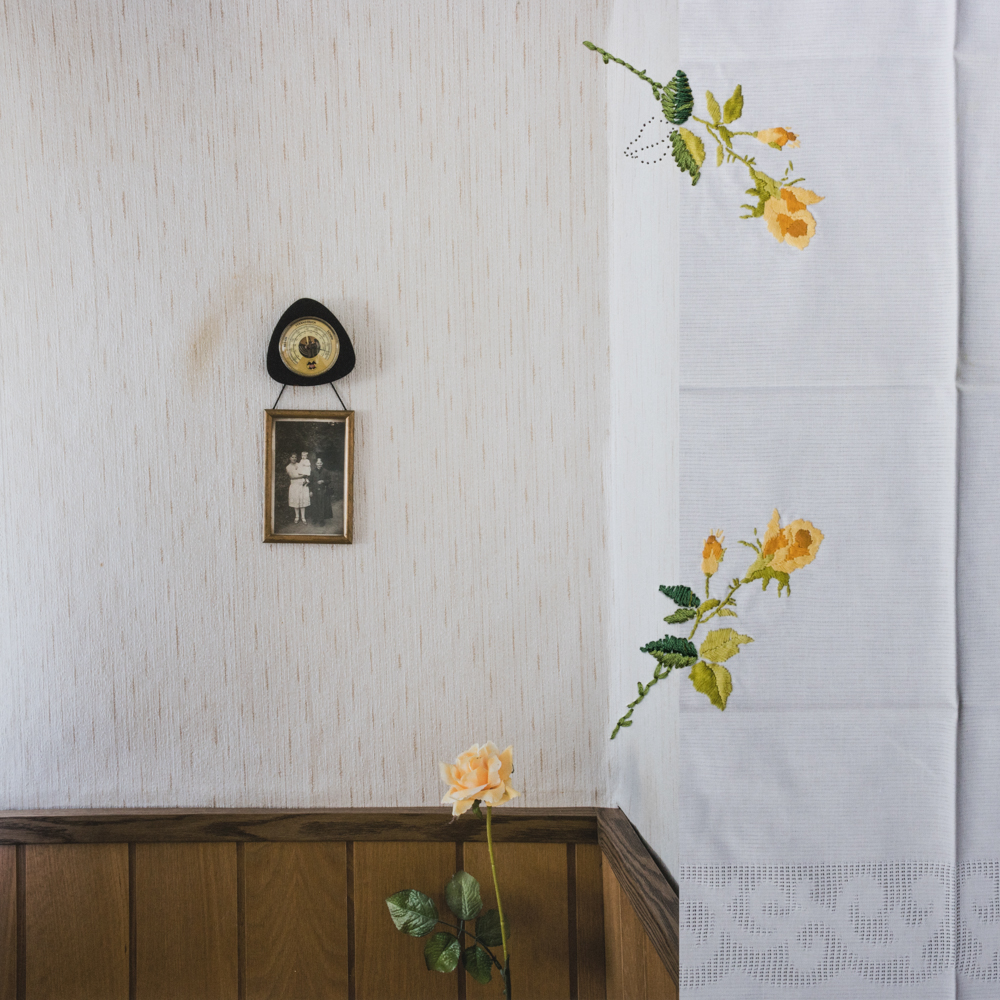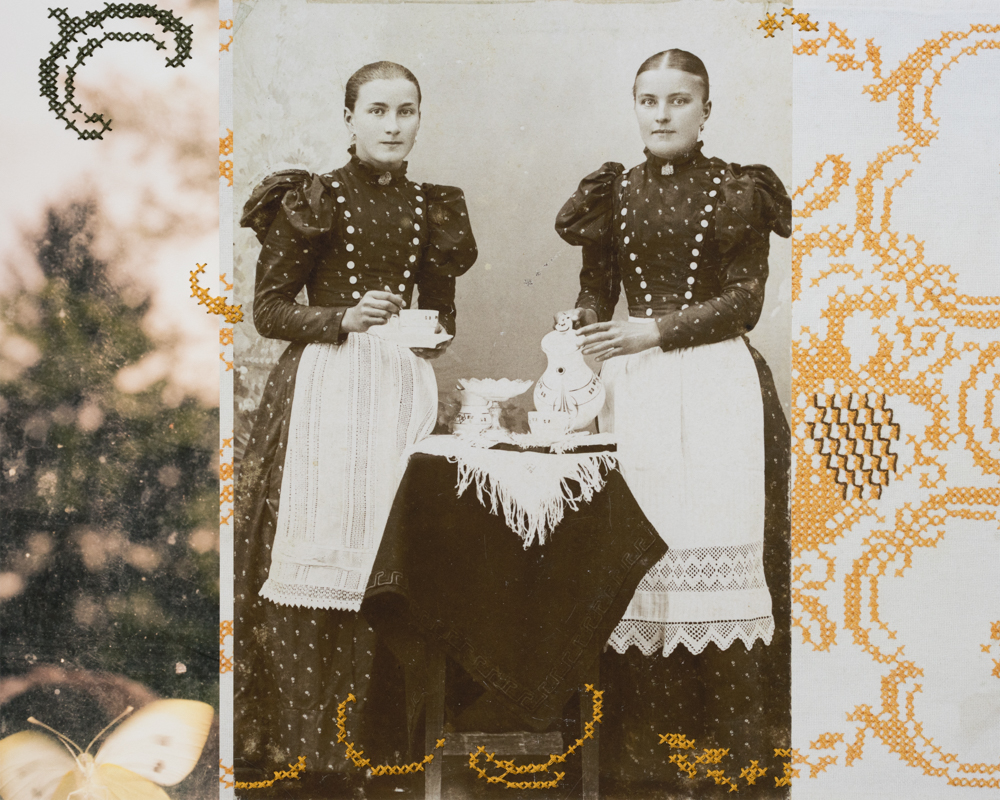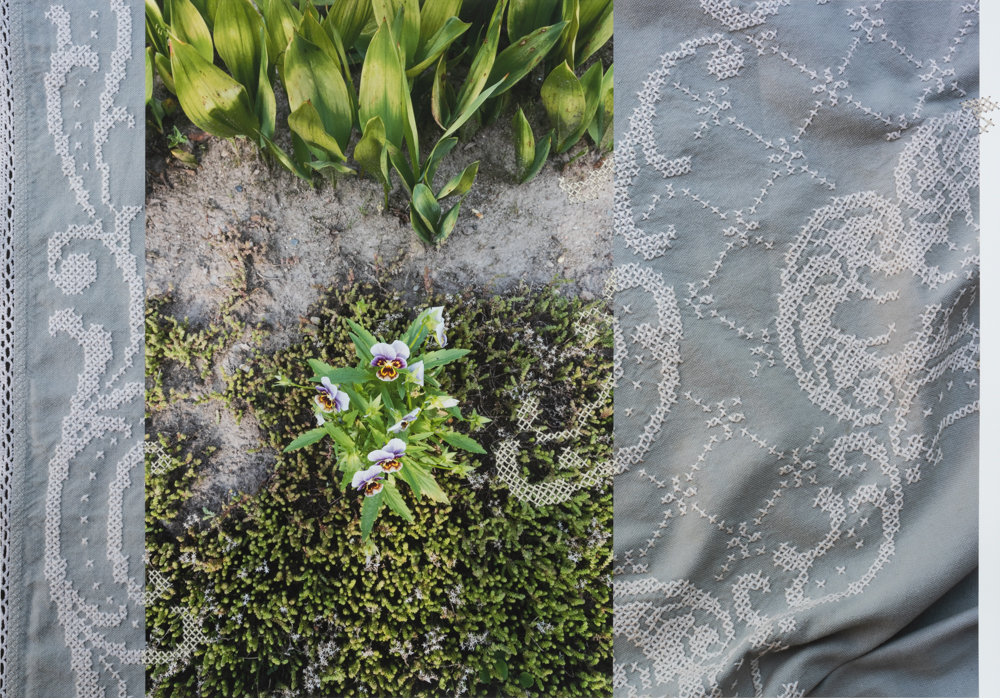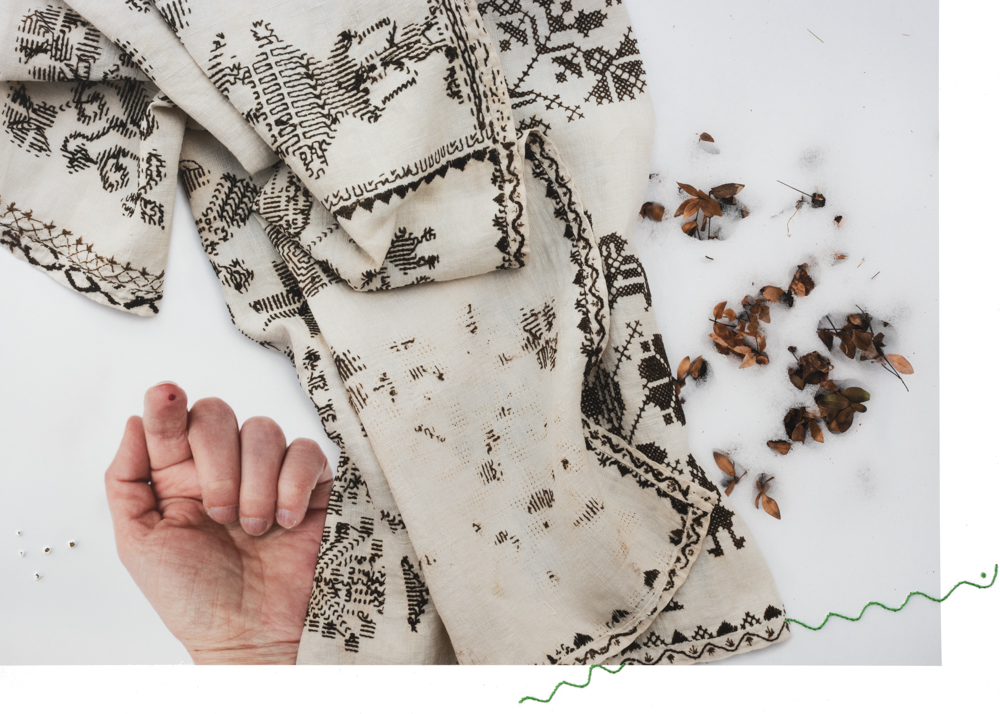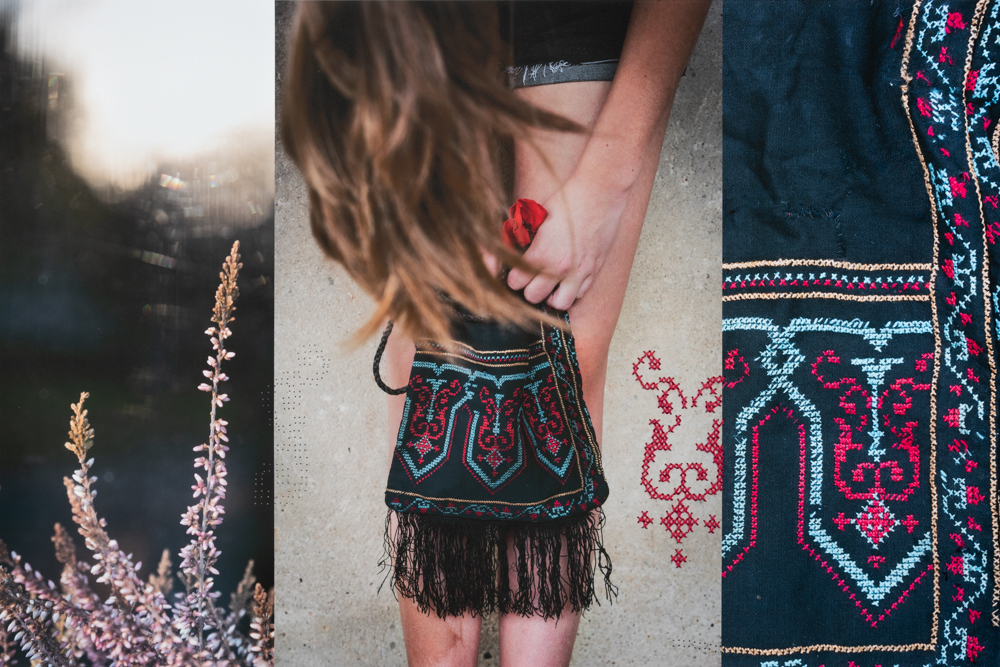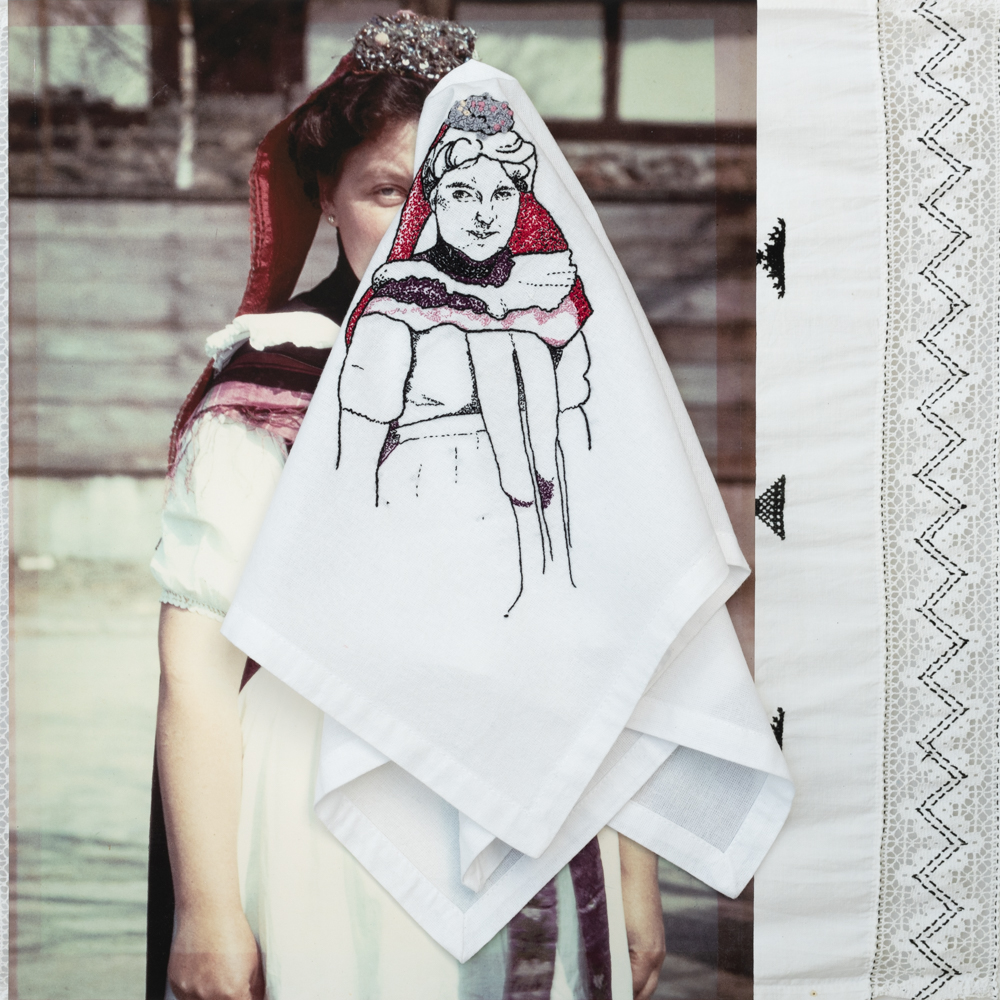Astrid Reischwitz: Spin Club Tapestry
Projects featured this week were selected from our most recent call-for-submissions. I was able to interview each of these individuals to gain further insight into the bodies of work they shared. Today, we are looking at the series Spin Club Tapestry by Astrid Reischwitz.
Astrid Reischwitz is a Boston-based photographer whose work explores storytelling from a personal perspective. Her projects include intimate views of private spaces, and reflections on her own history and values. Using keepsakes from family life, old photographs, and storytelling strategies, she builds a visual world of memory, identity, place, and home. Her current focus is the exploration of personal and collective memory influenced by her upbringing in Germany.
Reischwitz has exhibited at national and international museums and galleries including solo shows at The Center for Fine Art Photography, the Danforth Art Museum, the Griffin Museum of Photography, the Rhode Island Center for Photographic Arts, 555 Gallery, Davis Orton Gallery, and Soho Photo Gallery. Her portfolios were also shown at the Newport Art Museum, the Photographic Resource Center, Cambridge Art Association, Sohn Fine Art Gallery, and FotoNostrum.
Reischwitz was a Top 50 photographer at Photolucida’s Critical Mass in 2019 and 2016 and a Finalist for the 2017 Lens Culture Exposure Awards. She is a winner of the Soho Photo Gallery’s 2016 International Portfolio Competition, as well the Portfolio Showcase 10 at the Center for Fine Arts Photography (2017). Reischwitz is a two-time Category Winner for “Culture and Daily Life Series” and “Digital Composition Series” at the 14th Julia Margaret Cameron Award for Women Photographers, as well as a Category Winner “Open Theme Series” at the 14th Pollux Awards. At Cambridge Art Association, she has received numerous awards, including Best in Show at the 2019 National Prize exhibition. Honors also include Gold and Silver Medal Awards and a Portfolio Award at the San Francisco International Photo Show. She was selected as one of the Top 100 for Review Santa Fe.
Reischwitz was featured in Fraction Magazine, Lenscratch, LensCulture, What Will You Remember, Wired Japan, Il Post Italy, P3 Portugal, Syracuse University’s Family.Life, and the podcast Sounds Like an Earful. Her work was also published in Aint-Bad Magazine (Curator’s Choice), The Boston Globe, NRC Handelsblad Amsterdam, as well as other print media.
Reischwitz began her study of photography at the International Center of Photography in New York soon after moving to the United States. She continued her education at the New England School of Photography, Massachusetts College of Art and Design, Lesley University, and the Griffin Museum of Photography. She holds a Certificate in Arts Administration from New York University. Reischwitz is a graduate of the Technical University Braunschweig, Germany, with a PhD in Chemistry. In addition to making her own photographs, Reischwitz enjoys curating art exhibitions at the Bedford MA Free Public Library.
Reischwitz’s exhibition, The Fabric of Memory, is currently running at Gallery Kayafas in Boston, MA through October 17th.
Spin Club Tapestry
I grew up in a small farming village in Northern Germany. Long ago, village women met regularly in “Spinneklumps” (Spin Clubs) to spin wool, embroider, and stitch fabrics for their homes. I imagine their conversations as they worked, the beautiful stories that lifted their spirits, as well as the stories of sadness, sorrow and loss. In modern times, village women continued to meet in this tradition, but shared stories over coffee and cake instead of needlework. These close-knit groups of women often stayed together until their death.
In this series, my composite images take the form of tapestries, combining images of embroidered Spin Club fabrics with new and old photographs from the village. I connect the present and the past by recreating and re-imagining pieces of the embroidery. Spin Club tablecloths, napkins and wall hangings (some dating back to 1799) have been passed down from generation to generation. By following the stitches in these fabrics, I follow a path through the lives of my ancestors – their layout of a perfect pattern and the mistakes they made. Along the way, I add my own mistakes. The fabrics also reveal the passage of time, stained and distorted after sometimes decades of use. The patterns I have stitched myself into the paper are only abstractions of the original Spin Club designs, fragments of memory. After all, memory is fleeting, and changed forever in the act of recollection. Sometimes the stitching is incomplete, creating an invitation for future generations.
Every decision we make is influenced by our history, our environment, and the society we live in. The tapestry of my life belongs to me, but is stitched through with the beauty and heartache of past generations.
Daniel George: If you don’t mind sharing, I’d like to know a little more about your upbringing. Can you identify ways in which growing up in a small farming village has informed your artistic practice?
Astrid Reischwitz: Growing up, my grandmother was a great influence who planted an interest in local history in me. She was the keeper of the keys to a local farmhouse museum in the village; she was the keeper of local history, and the keeper of stories and tales that were shared among women in Spinneklumps (Spin Clubs). Spin Clubs met in past times with the purpose of spinning wool, doing needlework, and stitching tablecloth and wall hangings. At the same time, they talked about everyday occurrences and shared stories old and new. These close-knit groups of women stayed together throughout their lives.
The village I grew up in is bound to its history and stands out through its traditions even today, but many things of this culture, like the spin club itself, are about to become a distant memory. Customs, the traditional costume and the spoken dialect “Plattdeutsch” were interwoven with the village and showed noteworthy differences from one village to the next.
Local history and my newfound fondness of needlework informed the creation of Spin Club Tapestry.
DG: Tell me more about the beginnings of this project, and your thought process on compositing photographs and tapestries.
AR: An earlier portfolio, Stories from the Kitchen Table, tells my own family story by transforming the tradition of storytelling elements of the spin clubs into a visual journey. This was the inspiration to create a dialog with the past and to add my personal perspective to vintage images. In these composites present and past stand side by side but are often connected with binding elements, with fragmented images of vintage spin club fabric.
I started to see the importance of the embroidered fabric as a way to “stitch” together the present and past and to build a bridge to the future. Spin Club tablecloths, napkins and wall hangings have been passed down from generation to generation. Many times, theses fabrics were created as part of a dowry and kept safely for years to come in a beautiful trunk. For centuries, women used the symbolism in their embroidery as a form to the express themselves and to communicate. Learning the language of embroidery, the technique and pattern was part of their education. It was their legacy.
The use of fabric combined with vintage photos and new imagery creates an opportunity to build a bridge from the past into the future.
DG: This body of work is about memory, and speaks to the importance of maintaining a connection between past and present. Why do you feel it is important to encourage these types of conversations between generations?
AR: Creating these photographic tapestries is a way to reclaim the history of the village women and to reclaim my own history.
Ever since I moved to the US, my family is a long distance away in Germany. The passage of time became more evident! My photographic work keeps memories and stories alive not only for myself but also for my family and other families in the village. Memory is fleeting and the stories change as soon as I create or recall them and then time after time when the story surfaces again. Through creating these images, I now feel that I changed from a distant observer, in time and place, to somebody who takes an active part in this tale, in my own history.
DG: I was drawn to the finger prick in “Blanket of Time” as it relates to your artist statement—where you speak about your mistakes and those of your ancestors. I began to think about how reconciling past errors, both our own and those of our predecessors, can be painful. Could you speak more to the significance of including and calling attention to these things?
AR: In this image, the snow symbolizes a blanket of time that covers a memory. A memory that lays dormant until the snow melts, only to surface again, changed in the process of recollection.
Looking back to the past can sometimes be painful and prickly, but it can lead the way into the future and has the potential to start a healing process. Our memories are flexible and can be shaped and transformed in ways that can be helpful for a recovery.
A step further would be to not only look at errors but at the trauma of past generations. A growing body of research suggests that trauma can be passed from one generation to the next. Trauma can leave a chemical mark on a person’s genes, which can then be passed down to future generations.
I hope that my images will say: “Be an active part of your own history, find out what motivates you and use this insight to build your future.”
DG: In what ways do you feel that the inclusion of embroidery in your creative process has reconnected you with the heritage of the villages similar to where you were raised?
AR: The use of embroidery is a way to overcome the barrier of memory, the barrier of time and to learn how this culture influenced me. It deepened my understanding of the culture in these villages and made me feel more connected with my heritage.
Textile work is a form meditation away from the bustling world outside. To take up the needle means to reclaim the history of these village women and to reclaim my history. Here I can be still and let the mind wander. Through my embroidery, I get the notion that the present is an infinite small moment and perhaps therefore does not exist. The past constantly transforms into the future.
Posts on Lenscratch may not be reproduced without the permission of the Lenscratch staff and the photographer.
Recommended
-
Earth Month Photographers on Photographers: Josh Hobson in Conversation with Kes EfstathiouApril 19th, 2024
-
Earth Month Photographers on Photographers: Leonor Jurado in Conversation with Jessica HaysApril 18th, 2024
-
Ruotong Guan: Falling. Slowly. but,April 13th, 2024
-
Seth Adam Cook: As Big As The SkyApril 12th, 2024
-
Michael Borowski: AzurestApril 11th, 2024

